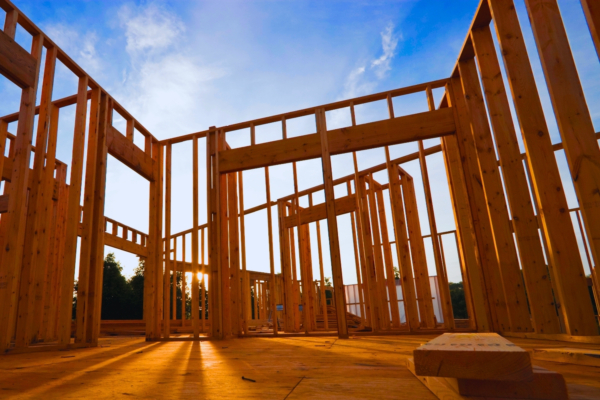
Starting a Business in a Rural Area? Harness the Power of USDA Business Loans

Approximately 97% of the land area of the United States is rural. That’s a staggering percentage! Rural business serve an estimated 19.3% of the population across that land area, operating under unique and sometimes difficult circumstances. According to a study from the Brookings Institution, small businesses are providing the majority of employment in rural areas.
Because rural small businesses have different needs than urban companies, there are several loan programs available that are specifically designed for small towns and rural communities, including the USDA business loan. Here’s what you need to know about qualifying and applying for this loan.
What are USDA business loans?
The USDA business loan program, formally known as Business & Industry Loan Guarantees, is a guaranteed loan program designed to help rural businesses get the capital they need to establish and grow in their local communities. The goal is to create job opportunities and economic growth in small towns and rural areas across the nation.
The loans can range in size depending on the needs of a business, but most fall between $200,000 and $5 million with the average loan size being $3 million. There’s no minimum amount that you must take out, but loans generally cannot exceed $10 million.
Commercial Lending Solutions
Ready to take that next step? Talk to our Commercial team today.
What is a guaranteed loan?
You’ll often hear the USDA business loan described as a “guaranteed loan” or a “government-backed loan”. This means that the USDA doesn’t actually fund the loans; instead, the government promises financial backing and responsibility for the loan if you default.
Borrowers apply for the program through participating lenders— like credit unions and federal- and state-chartered banks— who fund the note. This lender will negotiate and set the loan terms like the length of the loan and interest rate. If you are unable to make payments, the USDA will assume the debt obligation and take on responsibility for the loan. Because lenders assume very little risk with this type of loan, they can offer more favorable interest rates and loan terms to borrowers.
Who can apply for USDA business loans?
The following entities can take out USDA business loans:
- Cooperatives
- For-profit and non-profit businesses
- Federally-recognized tribes
- Public bodies
- Individuals engaged or proposing to engage in a business
The biggest requirement for USDA loans is simple: can the project be defined as a rural business?
What is considered a rural business?
Eligible areas for USDA business loans are defined as “rural areas not in a city or town with a population of more than 50,000 inhabitants”. The borrower may live or have headquarters based in another city, as long as the project being funded by the loan is in an eligible area.
To see if your area is eligible, be sure to check out the USDA’s interactive eligibility map.
What can a USDA be used (and not used) for?
Just because your business is considered rural does not mean that it will automatically qualify for a USDA loan.
There are several types of projects and activities that USDA business loans may NOT be used for, including:
- Churches or church-controlled organizations
- Fraternal organizations
- Racetracks or gambling facilities
- Golf courses or golf course infrastructure
- Owner-occupied rental housing
- Lines of credit
- Lending, investment, and insurance companies
- Agricultural production (with certain exceptions)
- Distribution or payment to a beneficiary of the borrower or an individual or entity that retain an ownership interest in the borrower
The USDA also provides a list of eligible uses, including:
- Debt refinancing
- Purchase and development of land, buildings, or other infrastructure for commercial or industrial purposes
- Business conversion, repair, modernization, enlargement, or development
- Purchase of equipment, machinery, supplies, and inventory
- Business and industrial acquisitions
Keep in mind that this is not an exhaustive list of eligible uses. A local USDA business loan lender will be able to help you determine whether or not your project qualifies.
How to Apply for USDA Business Loans
Applying for a USDA business loan is easy with the help of your local lender. To apply, most borrowers will follow these general steps:
- To get started, meet with a lender who provides USDA business loans. They will help you gather the right documents. Keep in mind that the lender doesn’t necessarily need to be located in the same area in which your rural business project is located.
- Your lender will help you submit a pre-application to the USDA in order to determine eligibility.
- If you are eligible, a USDA representative will meet with you and your lender to further determine if you qualify for the program.
- If you do indeed qualify, the lender will submit a full application to the USDA.
It typically takes the USDA around one to two months to process and approve the application, so you should expect the process to take at least two to three months from start to finish.
Required Documentation
Your lender will help you compile the documents you’ll need to submit with your application. Some common documents include:
- Your business plan (this is especially important if your business is new and you don’t have existing business financials to work with)
- The credit reports of business owners
- Credit reports for the business, if applicable
- Balance sheets and profit-loss statements
- Cash flow projections
- Current personal and/or corporate financial statements
- Tax returns
Providing this information helps your lender and USDA better understand the level of risk involved with lending your business money.
Collateral Requirements
Business owners, partners (excluding limited partners), and anyone owning more than 20% of the business is required to personally guarantee the loan. Additionally, USDA small business loans also require borrowers to put up collateral equal to the loan amount.
Environmental Review
Projects funded by USDA loan assistance are subject to the National Environmental Policy Act (NEPA). Because of this, USDA must complete an environmental analysis on USDA loan applications to ensure that projects supported by the federal government don’t harm the environment. The complexity of the environmental review will depend on the scope of the project.
Fees
USDA Business & Industry loans are subject to three types of fees:
- Initial guarantee fee: This is a one-time fee paid upfront that is 3% of the loan amount.
- Annual renewal fee: This fee is paid yearly and is 0.5% of the outstanding principal balance.
- Lender fees: Your lender may also charge their own origination, underwriting, and penalty fees on the loan.
Because lenders are the ones who set loan terms and other fees, it’s always a good idea to shop around to find the credit union or bank with the best rates.
Find the Right Business Loan for You
If you meet the eligibility requirements, a USDA business loan can be a great way to get the funds you need to establish or support your growing business. The favorable terms help stimulate growth in rural America and small towns with jobs, storefronts, and more.
Not sure if a USDA loan is right for you? A local lender like Amplify can help you select the right small business loan for you and your business.
Your Rural Business Has Options
Amplify’s commercial lending team can help you find the right solution for your business.


